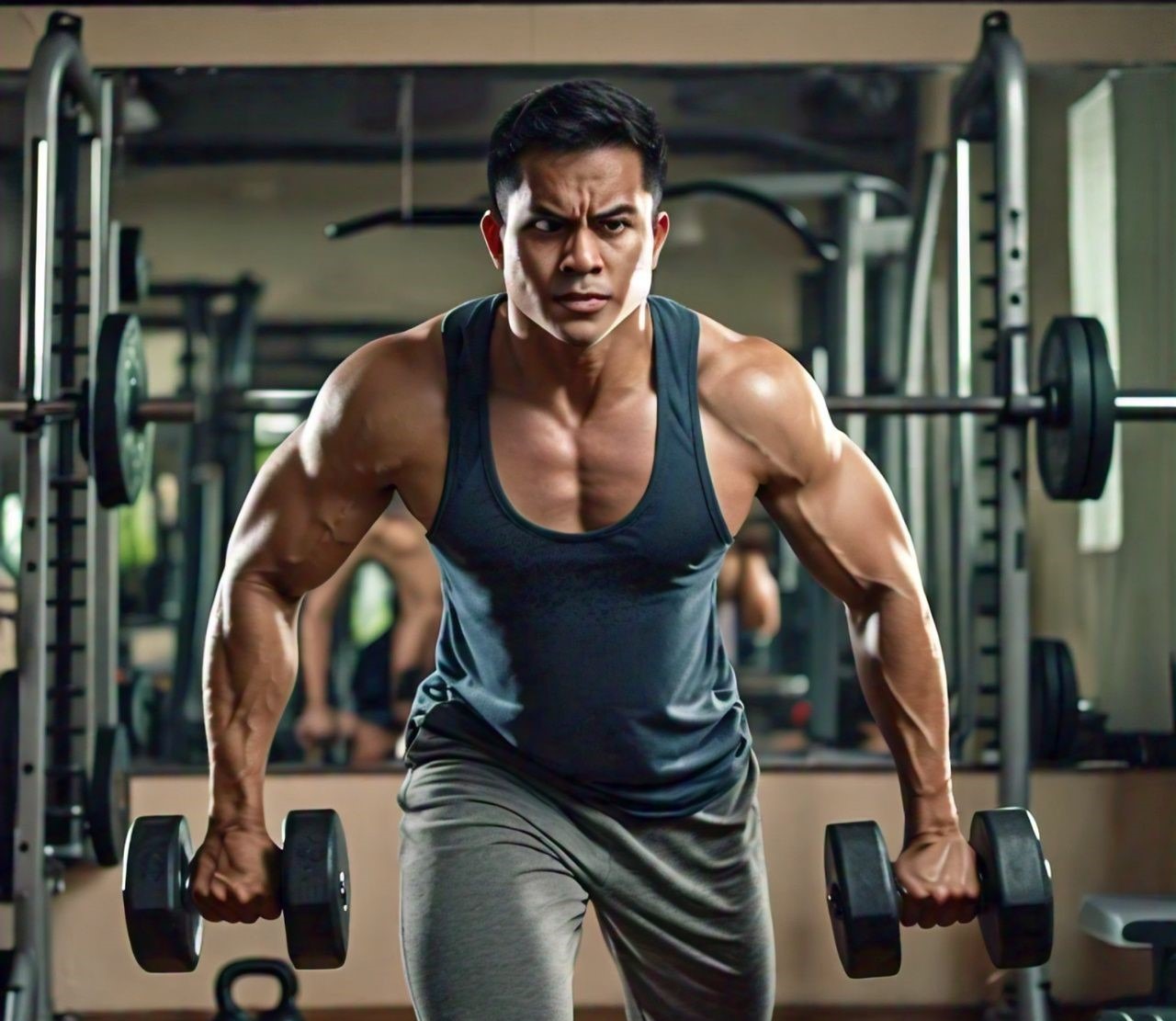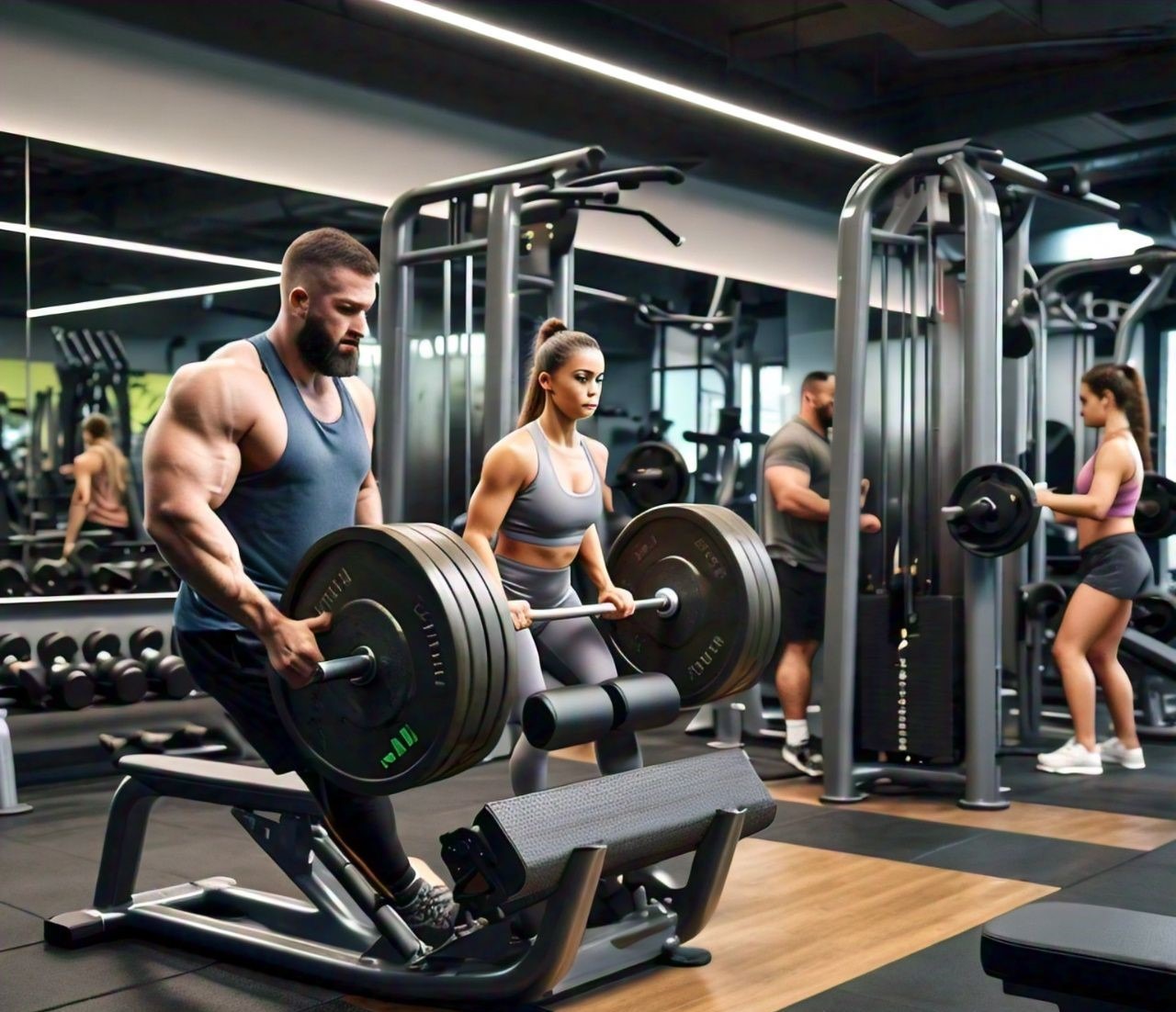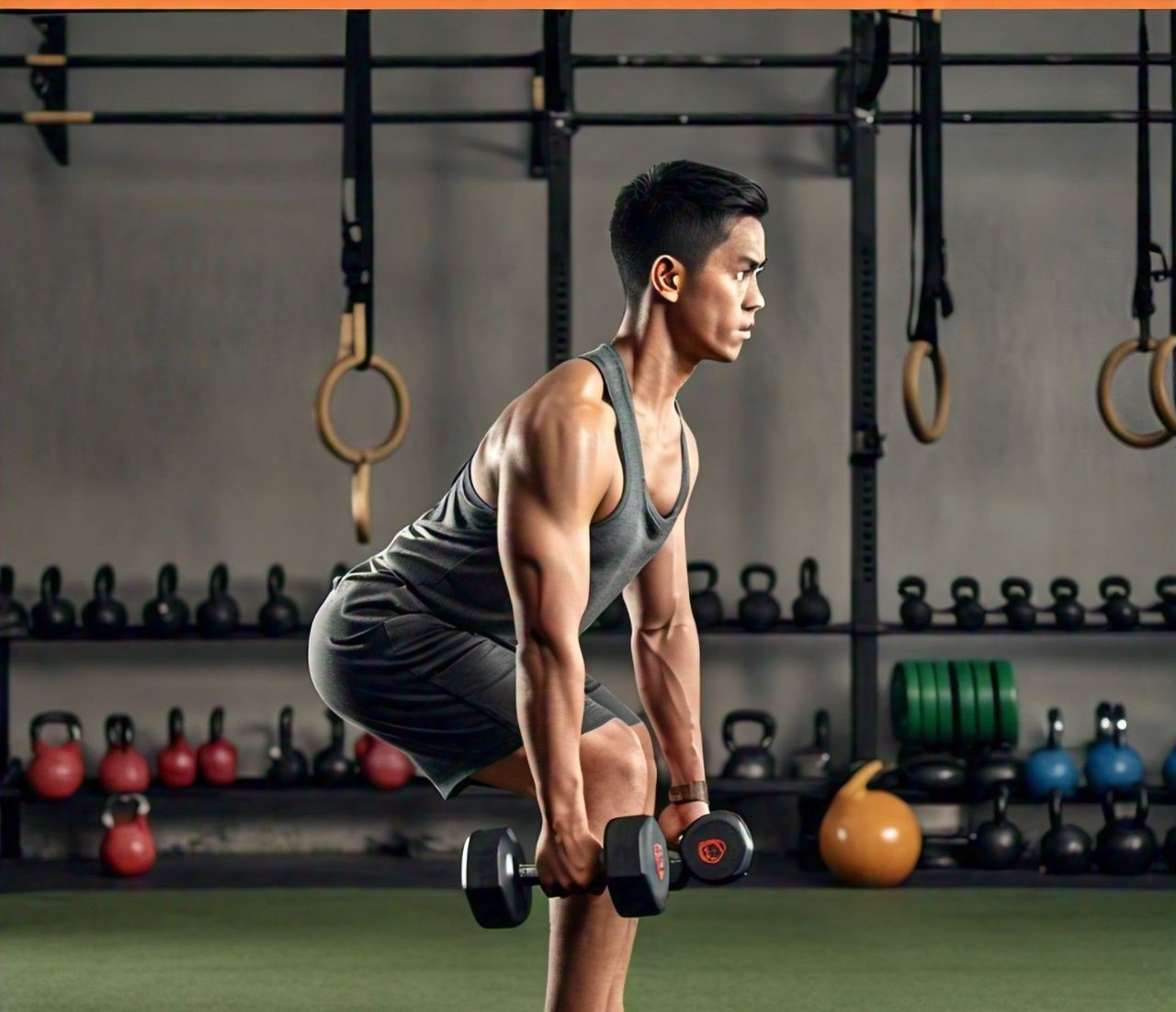- New Back Exercises With Dumbbells: Strengthen and Sculpt Your Back
- Introduction
- Understanding Back Muscles
- 1. Incorporating Supersets for Maximum Back Engagement
- 2. Importance of Mind-Muscle Connection in Back Exercises
- 3. Varying Grip Positions for Balanced Muscle Development
- 4. Progressive Overload: Increasing Weight for Continued Gains
- 5. Utilizing Unilateral Movements to Correct Muscle Imbalances
- Conclusion
New Back Exercises With Dumbbells: Strengthen and Sculpt Your Back
Back exercises are a crucial component of any fitness routine. A strong back not only supports good posture but also prevents injuries and enhances overall strength. Incorporating back exercises with dumbbells into your workout routine can provide versatility and allow you to perform a range of exercises, whether you’re at the gym or working out at home. In this comprehensive guide, we’ll explore new back exercises with dumbbells that can help you build a powerful, well-defined back.
Introduction
New Back Exercises With Dumbbells
Back exercises with dumbbells are essential for maintaining a strong and healthy upper body. Whether you’re looking to improve your posture, prevent injuries, or enhance your overall strength, working out your back muscles with dumbbells is key. Using dumbbells for back exercises offers several advantages, including the ability to target specific muscle groups, increase resistance gradually, and perform the exercises in various settings.
In this article, we’ll delve into a variety of new and effective back exercises with dumbbells. You’ll learn about the anatomy of the back muscles, how to prepare for these exercises, and step-by-step instructions for each movement. By the end, you’ll have a comprehensive understanding of how to integrate these back exercises with dumbbells into your fitness routine for maximum results.
Understanding Back Muscles
Anatomy of the Back Muscles
The back is composed of several major muscle groups, each playing a vital role in movement, stability, and posture. Here’s a breakdown of the primary muscles you’ll be targeting with these back exercises with dumbbells:
- Latissimus Dorsi: Often referred to as the “lats,” these are the broadest muscles in the back. They extend, adduct, and internally rotate the shoulder. The lats are crucial for movements like pull-ups, rows, and other back exercises with dumbbells.
- Trapezius: This large, triangular muscle extends from the back of the neck down to the middle of the back and across to the shoulder blades. It’s responsible for moving the scapulae (shoulder blades) and supporting arm movements. Effective back exercises with dumbbells often target the trapezius for strength and stability.
- Rhomboids: Located between the shoulder blades, the rhomboids retract the scapula, pulling them towards the spine. These muscles are essential for maintaining good posture and are frequently engaged during back exercises with dumbbells.
- Erector Spinae: This group of muscles runs along the spine and helps with extending the back. The erector spinae are vital for maintaining an upright posture and are heavily engaged in back exercises with dumbbells like deadlifts.
- Teres Major and Minor: These smaller muscles assist the lats in moving the arms and stabilizing the shoulder joint. Incorporating back exercises with dumbbells that target the teres major and minor can improve shoulder stability and overall back strength.
Understanding the anatomy of your back muscles is important because it helps you focus on the specific areas you’re working on during each of these back exercises with dumbbells. It also ensures you’re performing movements correctly, which can prevent injuries and lead to more effective workouts.
Why Back Exercises With Dumbbells Are Crucial
Back exercises with dumbbells are not just about aesthetics; they’re crucial for overall health and fitness. Here are some key reasons why you should include back exercises with dumbbells in your routine:
- Injury Prevention: A strong back helps support your spine and reduces the risk of injuries, especially in the lower back. This is particularly important for those who spend a lot of time sitting, as poor posture can lead to chronic pain and discomfort. Regularly performing back exercises with dumbbells can strengthen these muscles and help prevent such issues.
- Posture Improvement: Strengthening the back muscles, particularly the trapezius and rhomboids, can help correct posture imbalances. A well-conditioned back helps you maintain an upright posture, reducing the strain on your neck and shoulders. Back exercises with dumbbells are highly effective for targeting these muscles and improving posture.
- Enhanced Athletic Performance: Whether you’re a runner, a swimmer, or a weightlifter, strong back muscles are essential for optimal performance. The lats, in particular, play a significant role in movements that involve pulling, lifting, and reaching. Incorporating back exercises with dumbbells into your training can enhance your athletic performance by building these critical muscles.
- Balanced Upper Body Strength: While many people focus on chest and arm exercises, neglecting the back can lead to muscular imbalances. Including back exercises with dumbbells ensures that your upper body strength is well-balanced, which is important for overall fitness and injury prevention.
- Aesthetic Benefits: Finally, a well-developed back contributes to a V-shaped torso, which is a common aesthetic goal for many fitness enthusiasts. This shape is achieved by targeting the lats and the upper back muscles, creating a broader, more defined back. Back exercises with dumbbells are perfect for sculpting this desired physique.
Incorporating back exercises with dumbbells into your routine not only helps you achieve these benefits but also provides the flexibility to tailor your workouts to your specific needs and goals. Whether you’re looking to build strength, improve posture, or enhance athletic performance, these back exercises with dumbbells are a valuable addition to your fitness regimen.
1. Incorporating Supersets for Maximum Back Engagement
Supersets involve performing two exercises back-to-back without rest, targeting different parts of the back or pairing a back exercise with a complementary muscle group. For example, combining Dumbbell Rows with Dumbbell Deadlifts can intensify your workout and lead to greater muscle activation. This approach not only saves time but also keeps your muscles engaged, promoting better strength and endurance development.
2. Importance of Mind-Muscle Connection in Back Exercises
Focusing on the mind-muscle connection during back exercises with dumbbells is crucial for maximizing results. By consciously engaging the specific muscles you’re targeting—such as the lats or traps—you can enhance muscle activation and growth. Slow down your movements, concentrate on the contraction and extension phases, and ensure you’re feeling the intended muscles work with each rep.
3. Varying Grip Positions for Balanced Muscle Development
Changing your grip position during back exercises with dumbbells can significantly impact which muscles are targeted. For instance, using an overhand grip during Dumbbell Rows emphasizes the upper back and traps, while an underhand grip shifts focus to the lats and biceps. Incorporating different grip variations ensures a well-rounded back workout, promoting balanced muscle development and reducing the risk of muscular imbalances.
4. Progressive Overload: Increasing Weight for Continued Gains
Progressive overload is the principle of gradually increasing the weight or resistance in your exercises to continually challenge your muscles and stimulate growth. With back exercises using dumbbells, start with a manageable weight, and as your strength improves, incrementally increase the dumbbell weight. This approach ensures consistent progress and helps you avoid plateaus in your training, leading to sustained muscle gains.
5. Utilizing Unilateral Movements to Correct Muscle Imbalances
Unilateral exercises, where each side of the body is trained independently, are essential for correcting muscle imbalances that can develop from favoring one side during bilateral movements. Dumbbell exercises like Single-Arm Rows allow you to focus on one side of the back at a time, ensuring both sides are equally strong and developed. This not only improves overall back symmetry but also reduces the risk of injury caused by muscle imbalances.
Conclusion
Incorporating back exercises with dumbbells into your fitness routine is an effective way to build strength, improve posture, and achieve a well-defined back. From foundational exercises like Dumbbell Rows to advanced techniques like supersets and progressive overload, these workouts offer versatility and can be tailored to suit any fitness level. Remember to focus on the mind-muscle connection, vary your grip positions, and utilize unilateral movements to correct imbalances for a comprehensive back workout.
Consistency is key—gradually increasing the intensity and weight will help you avoid plateaus and continue making progress. Whether you’re working out at home or in the gym, these dumbbell exercises will help you strengthen your back, reduce the risk of injury, and support overall fitness goals.
For more information on fitness and health, check out these resources:
Explore more articles on our site:
- How to Increase Running Stamina for Beginners at Home
- What Happens if You Don’t Get Enough Sleep Consistently: Effects and Solutions
- The Ultimate Guide to Healthy Living in 2024
- The Future of Artificial Intelligence: What to Expect
- Unlocking the Potential of Chat GPT Software: Revolutionizing AI Conversations
- Best Sleeping Position for Peripheral Artery Disease [New 2024]
- How to Increase Running Stamina for Beginners at Home
- 5 New Inner Thigh Exercises for Men and Women




